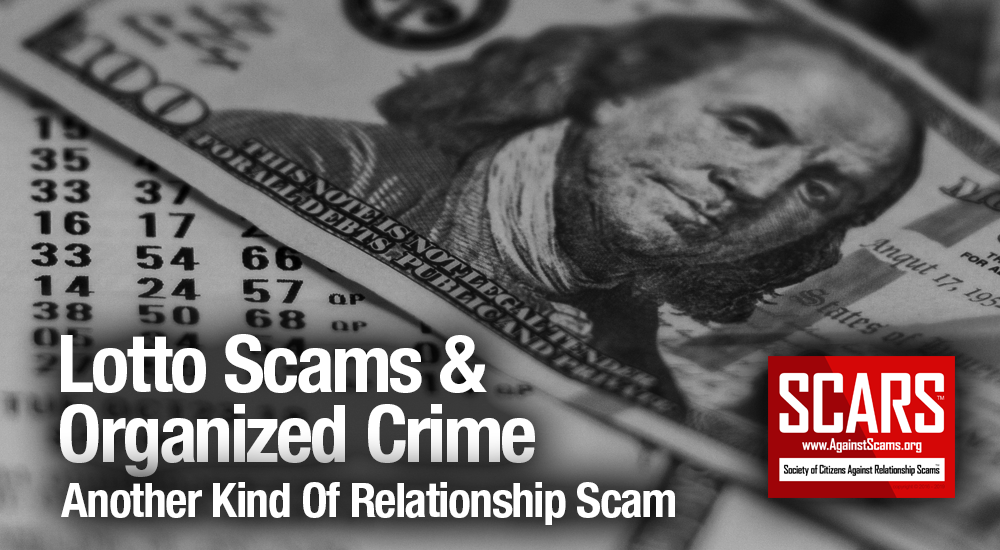Will The US Embrace The UK Contingent Reimbursement Model To Fight Online Scams Losses?
Online Scams And Your Bank
According to Thompson Reuters:
Online scams threaten thousands of Americans each year, and US regulators and financial institutions should pursue new methods to better fight these scams and bring relief to victims
Online scams are growing at an alarming rate, impacting consumers financially and emotionally. The impact of these scams is so significant, that there are cases of post-traumatic stress disorder (PTSD) and even suicide.
Total losses from online scams and identity theft reported to the Federal Bureau of Investigation (FBI) have increased to $10. 3 billion in 2022 from $6.9 billion the year before, according to the FBI Internet Crime Complaint Center report, and it is estimated that that numbers are much higher because less than 7% are assumed to report to any authority due to shame and embarrassment. One type of crime that is growing significantly is cryptocurrency investment scam, which climbed an alarming 183% to $2.57 billion in 2022 from $907 million in 2021.
With these monetary losses skyrocketing, one question arises: Who is protecting consumers? Many claim that this is a matter of personal responsibility, but with the alarming growth in losses, the societal impact of these scams is yet to be truly measured. Law enforcement and the FBI might investigate some cases, but the recovery possibilities are extremely limited once the money ends up in the hands of the criminals.
Of course, financial institutions hold some liability when it comes to fraudulent transactions, but the liability to reimburse customers only happens in the case of account takeover fraud, or unauthorized transactions. In this scenario, criminals will use an array of tactics such as stolen credentials or malware to login to the legitimate customer’s account or take over an existing online banking session.
In the United States, Regulation E (Reg E), which was issued by the Federal Reserve as an implementation of the Electronic Fund Transfer Act of 1978, determines the conditions under which financial institutions will reimburse their customers for unauthorized electronic transfers. While several clarifications have been issued over the years to outline specific cases for online banking and debit card activity, one thing remains clear — If a customer performed an authorized transaction even if they were manipulated to do so by a scammer, they will not be covered under Reg E and the bank will not be liable to reimburse customers. Given the amounts of money lost to scams such schemes as romance scams, investment scams, bank impersonation scams, and many others, and the implication of billions of dollars leaving the U.S. every year to illicit actors based in foreign countries, there is a need to take action.
Interestingly, there are several activities happening with numerous federal agencies pushing to do more around scams, such as the Federal Communications Commission (FCC) to take more action in detecting scam text messages, and the Federal Trade Commission (FTC) pushing social media and video platforms to address the surge in scams.
Embracing the Contingent Reimbursement Model
One interesting example of a model for scam loss reimbursement can be taken from the United Kingdom. The Contingent Reimbursement Model (CRM) was introduced in May 2019 in the U.K. in the form of an initiative designed to reimburse victims of authorized push payment fraud (APP fraud). This is a voluntary code that can be used by banks which agree to participate in the initiative.
Since its launch in 2019, the CRM has been successful in providing a more streamlined and efficient way of compensating victims of APP fraud. In fact, a total of almost 50% of reported scam losses have been reimbursed to victims of APP fraud under the CRM between the first half of 2020 and the second half of 2022, according to the latest figures released by U.K. Finance. This represents a significant increase compared to the previous reimbursement models, which often resulted in remaining financial losses to the victims. Under the CRM, the customer’s bank will reimburse the customer and take loss liability.
Unfortunately, the U.S. banking sector has been focused on an extremely narrow section of scams that has caught headlines, which is fraud on the Zelle payment platform. There has been a significant increase in Zelle fraud due to the nature of Zelle being a faster payment person-to-person network, with the money being transferred immediately to the beneficiary. Indeed, scams increased more than 250% to more than $255 million in 2022, compared to more than $90 million in 2020, according to a report released by Sen. Elizabeth Warren (D-Mass.) in October 2022.
From April to November 2022, Sen. Warren pushed the operators of Zelle — Early Warning Services, which itself is owned by a number of large U.S. banks — to provide numbers and explain their plan to reimburse customers and provide better protection. In November 2022, the seven banks that own Zelle started to work on a rule change that will require the network’s member banks to compensate customers who fall victim to certain kinds of scams. The shift would reverse the network’s current policy, which typically leaves customers with the losses on any Zelle transactions that the customers initiated themselves — even if they were tricked into sending their cash to a criminal.
Under the planned rules, if the banks determined that a customer had been deceived into sending money, the recipient bank — the one holding the scammer’s bank account — would be responsible for returning the money to the victim’s bank. That bank would then refund its defrauded customer.
This announcement is a huge change and brings a wave of optimism; however, there are many issues with the proposed reimbursement model. First, it is still unclear which cases will be reimbursed. The news of the proposal model has also received pushback by smaller banks that claimed that they cannot afford to pay for customer scam losses on Zelle, and they might need to leave the Zelle network if this rule will be reinforced, driving more competitive challenges for smaller banks. In addition, and perhaps most obvious, although Zelle scams are skyrocketing, we see other scam vectors growing significantly in which transfers to criminals are not conducted on the Zelle payment platform.
Clearly, the industry needs a more holistic approach to protect consumers who are losing money in growing amounts, especially since Zelle fraud is a comparative drop in the multi- billion-dollar ocean of similar financial scams.
So, to answer the original question: Could the U.K.’s CRM model be deployed in the U.S.? It seems like the Zelle liability initiative that was taken to address a very isolated issue might quiet broader conversations for the time being. However, with the sophistication of the banking ecosystem in the U.S. and the many stakeholders that would need to get involved, it is highly unlikely that this model will be implemented in the U.S. as a voluntary measure.
There is a broader ecosystem that needs to take more responsibility across the scam lifecycle, starting with telecom companies and social media platforms, which facilitate communication, and then onto the banks which enable these illicit transactions.
There definitely should be more collaboration and data-sharing across sectors, and that should be facilitated by the government. At a minimum, banks should take better care of their customers by erecting stronger controls to prevent scams and drive better awareness of these schemes.
SCARS Comment:
We believe that the answer is an absolute yes! Banks need to feel the pain of online scams along with the customers and make them whole as much as possible, through regulation as needed.
Only when the banks share in the risk of online scams will meaningful changes take place that better protect their customers.
Of course, this means that some customers who are completely under the control of the criminals in their online scams will not be happy, but if it prevents a small fraction of these crimes, it is worth it!
Learn More:
-/ 30 /-
What do you think about this?
Please share your thoughts in a comment below!
RATE THIS ARTICLE?
LEAVE A COMMENT?
Thank you for your comment. You may receive an email to follow up. We never share your data with marketers.
Recent Comments
On Other Articles
- on Dating Scammers Paradise: Ivory Coast: “The Ivory Coast romance scam is still going on. It seems that local authorities don’t handle the issue effectively!” Dec 10, 02:17
- on The SCARS Institute Top 50 Celebrity Impersonation Scams – 2025: “Thank you – we will.” Dec 7, 11:41
- on The SCARS Institute Top 50 Celebrity Impersonation Scams – 2025: “You should add Sean Bean to your list of Celebrities. This one is very good, and persistent. He will be…” Dec 2, 12:07
- on How You Think & Talk About Your Scam Affects Your Recovery: “I have hung on to the scams for far too long. With the intervention of an all-merciful God, I have…” Nov 6, 22:13
- on Disengaging From A Fake Scam Relationship: “Taci, you may want to join our new support community at www.SCARScommunity.org” Nov 6, 03:01
- on Disengaging From A Fake Scam Relationship: “This particular article helped me discover the many things I did wrong the first time I was scammed. I should…” Nov 5, 22:49
- on About the SCARS RomanceScamsNOW.com Website – 24 Years Published: “It was unavailable for a few days, but it is available again. If he would be interested, he is welcome…” Nov 5, 00:59
- on About the SCARS RomanceScamsNOW.com Website – 24 Years Published: “My husband has been scammed and your classes have been helping him but now he can’t seem to access them.…” Oct 26, 14:57
- on Talia Shepard – Impersonation Victim – Stolen Photos – 2024: “Hi, I’m Patrick from Belgium and I found this site by chance, so I just got to know it, and…” Oct 17, 23:46
- on Talia Shepard – Impersonation Victim – Stolen Photos – 2024: “Hallo ik ben Patrick uit Belgie en het is in verband over PayPal. Ik heb het dit jaar spijtig genoeg…” Oct 17, 23:08
ARTICLE META
Important Information for New Scam Victims
- Please visit www.ScamVictimsSupport.org – a SCARS Website for New Scam Victims & Sextortion Victims
- Enroll in FREE SCARS Scam Survivor’s School now at www.SCARSeducation.org
- Please visit www.ScamPsychology.org – to more fully understand the psychological concepts involved in scams and scam victim recovery
If you are looking for local trauma counselors please visit counseling.AgainstScams.org or join SCARS for our counseling/therapy benefit: membership.AgainstScams.org
If you need to speak with someone now, you can dial 988 or find phone numbers for crisis hotlines all around the world here: www.opencounseling.com/suicide-hotlines
A Note About Labeling!
We often use the term ‘scam victim’ in our articles, but this is a convenience to help those searching for information in search engines like Google. It is just a convenience and has no deeper meaning. If you have come through such an experience, YOU are a Survivor! It was not your fault. You are not alone! Axios!
A Question of Trust
At the SCARS Institute, we invite you to do your own research on the topics we speak about and publish, Our team investigates the subject being discussed, especially when it comes to understanding the scam victims-survivors experience. You can do Google searches but in many cases, you will have to wade through scientific papers and studies. However, remember that biases and perspectives matter and influence the outcome. Regardless, we encourage you to explore these topics as thoroughly as you can for your own awareness.
Statement About Victim Blaming
Some of our articles discuss various aspects of victims. This is both about better understanding victims (the science of victimology) and their behaviors and psychology. This helps us to educate victims/survivors about why these crimes happened and to not blame themselves, better develop recovery programs, and to help victims avoid scams in the future. At times this may sound like blaming the victim, but it does not blame scam victims, we are simply explaining the hows and whys of the experience victims have.
These articles, about the Psychology of Scams or Victim Psychology – meaning that all humans have psychological or cognitive characteristics in common that can either be exploited or work against us – help us all to understand the unique challenges victims face before, during, and after scams, fraud, or cybercrimes. These sometimes talk about some of the vulnerabilities the scammers exploit. Victims rarely have control of them or are even aware of them, until something like a scam happens and then they can learn how their mind works and how to overcome these mechanisms.
Articles like these help victims and others understand these processes and how to help prevent them from being exploited again or to help them recover more easily by understanding their post-scam behaviors. Learn more about the Psychology of Scams at www.ScamPsychology.org
Psychology Disclaimer:
All articles about psychology and the human brain on this website are for information & education only
The information provided in this article is intended for educational and self-help purposes only and should not be construed as a substitute for professional therapy or counseling.
While any self-help techniques outlined herein may be beneficial for scam victims seeking to recover from their experience and move towards recovery, it is important to consult with a qualified mental health professional before initiating any course of action. Each individual’s experience and needs are unique, and what works for one person may not be suitable for another.
Additionally, any approach may not be appropriate for individuals with certain pre-existing mental health conditions or trauma histories. It is advisable to seek guidance from a licensed therapist or counselor who can provide personalized support, guidance, and treatment tailored to your specific needs.
If you are experiencing significant distress or emotional difficulties related to a scam or other traumatic event, please consult your doctor or mental health provider for appropriate care and support.
Also read our SCARS Institute Statement about Professional Care for Scam Victims – click here to go to our ScamsNOW.com website.


















I must confess that my bank did its best to stop me from wiring my funds to my scammers. I only wish I would have listened.
I wish US could implement the APP fraud model from UK to help victims pf scams.